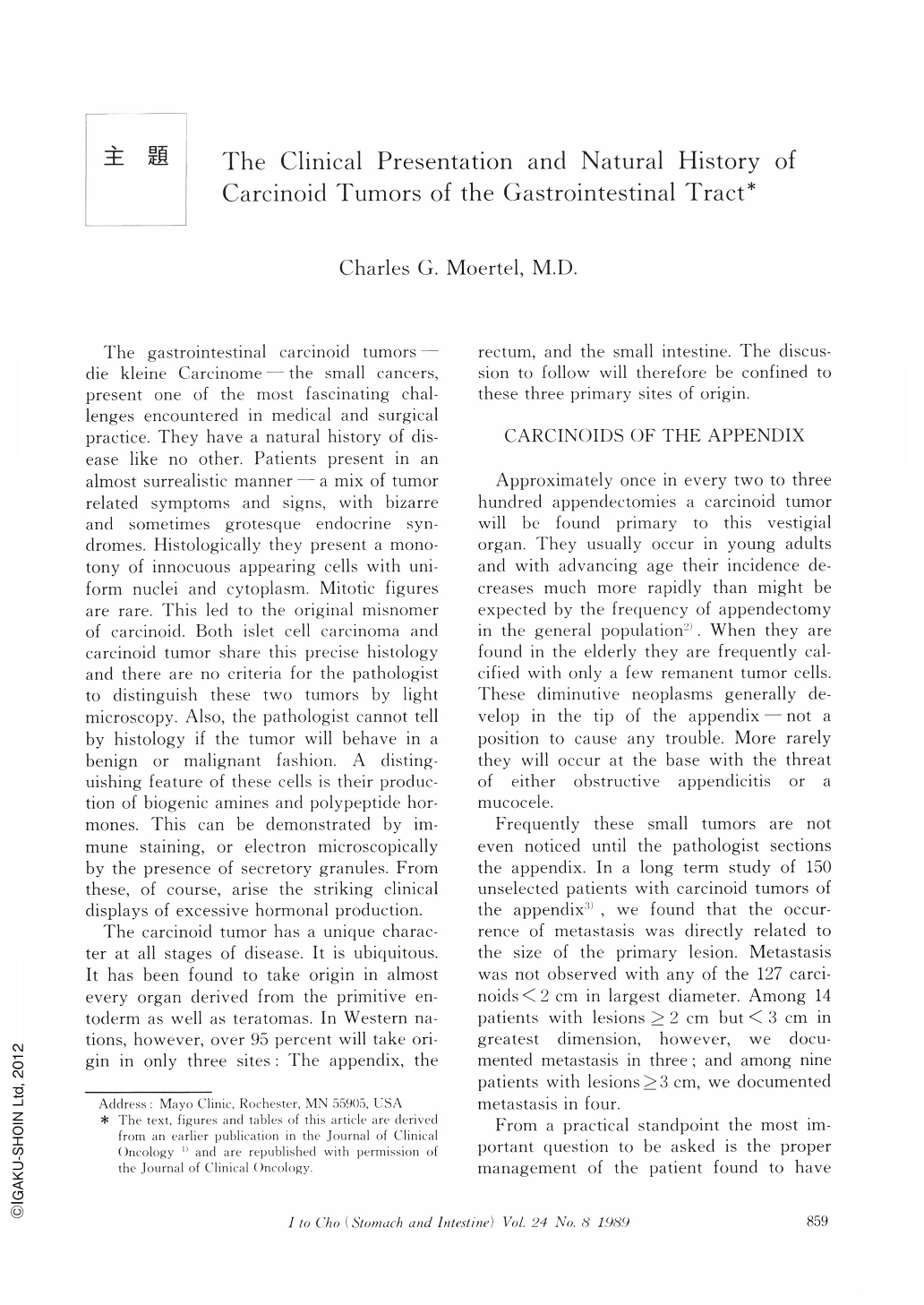Japanese
English
- 有料閲覧
- Abstract 文献概要
- 1ページ目 Look Inside
- サイト内被引用 Cited by
Carcinoid tumors may take origin from any tissue derived from the primitive entoderm as well as teratomas. Histologies of clinically benign and malignant tumors are identical and the likelihood of metastasis for all carcinoids is directly proportionate to size of the primary. The overwhelming majority of carcinoids encountered clinically have their primary sites in the appendix, the rectum, and the small intestine. Tumors of the appendix and rectum are usually incidental findings of no importance to the patient and are best managed by very conservative procedures, i.e. simple appendectomy or fulguration. Only the very rare tumors greater than 2 cm in diameter justify cancer type operations. Most carcinoids of clinical significance take origin in the small intestine, particularly the small ileum, and will be manifested by partial small bowel obstruction. If the tumor is confined to the bowel wall, resection will usually prove curative. With resectable regional nodal metastasis cure is uncommon, but the patient will usually have a very long latent period before recurrence is clinically apparent (median 16 years). Carcinoid tumors are usually very indolent at all stages of disease. The median survival after diagnosis of unresectable abdominal metastasis was five years and after hepatic metastasis three years. The malignant carcinoid syndrome, probably resulting at least in part from excessive tumor production of serotonin, is a manifestation of late stage disease and usually hepatic metastasis. Common symptoms are flushing and diarrhea which can frequently be managed by a recently available analogue of somatostatin. After long term exposure to high concentrations of serotonin, carcinoid heart disease may develop which in carefully selected cases can be managed with valve replacement.
Carcinoid tumors may take origin from any tissue derived from the primitive entoderm as well as teratomas. Histologies of clinically benign and malignant tumors are identical and the likelihood of metastasis for all carcinoids is directly proportionate to size of the primary. The overwhelming majority of carcinoids encountered clinically have their primary sites in the appendix, the rectum, and the small intestine. Tumors of the appendix and rectum are usually incidental findings of no importance to the patient and are best managed by very conservative procedures, i.e. simple appendectomy or fulguration. Only the very rare tumors greater than 2 cm in diameter justify cancer type operations. Most carcinoids of clinical significance take origin in the small intestine, particularly the small ileum, and will be manifested by partial small bowel obstruction. If the tumor is confined to the bowel wall, resection will usually prove curative. With resectable regional nodal metastasis cure is uncommon, but the patient will usually have a very long latent period before recurrence is clinically apparent (median 16 years). Carcinoid tumors are usually very indolent at all stages of disease. The median survival after diagnosis of unresectable abdominal metastasis was five years and after hepatic metastasis three years. The malignant carcinoid syndrome, probably resulting at least in part from excessive tumor production of serotonin, is a manifestation of late stage disease and usually hepatic metastasis. Common symptoms are flushing and diarrhea which can frequently be managed by a recently available analogue of somatostatin. After long term exposure to high concentrations of serotonin, carcinoid heart disease may develop which in carefully selected cases can be managed with valve replacement.

Copyright © 1989, Igaku-Shoin Ltd. All rights reserved.


